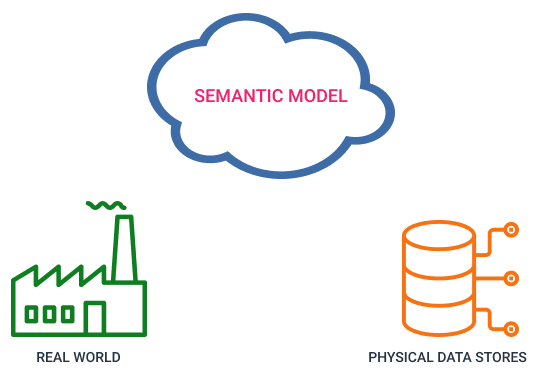Insights
We use modern tools and technologies to solve traditional problems in the decision-making space. We use a combination of cost-effective technologies, home grown products, framework to expedite time to value in new implementations and provide personalized insights. We constantly evaluate in every aspect of value-driven analytics deliverables.
Personalized Dashboards
You can empower your entire team with Hexalytics’ data insights in real-time, cloud-based dashboards. Our platform is no ordinary dashboards, it provides data in real-time, so your data is never stale. Create and share custom views of your data on the fly, in minutes, with dashboards that are orders of magnitude easier to use.
With Hexalytics robust dashboards, you can:
- Create pie charts, graphs, interactive maps, and more with just a few clicks.
- Build a dashboard once and make it instantly available on any device.
- Tell a story with your data with your own custom layouts, colors, and commentary—all with no coding and changes available instantly to users.
- Know you always have current reports with real-time data updates.
- Access your dashboards from anywhere –computer, tablet, or phone. Let Hexalytics’ dashboards help you go fast, go big, and go bold!

Governed Semantic Models
We integrate embedded analytics into the data platform to help make it easy to use. Semantic layers are a good solution because of their ability to:
- Harmonize and simplify the incredible complexity of data
- Present the available data in an understandable way to encourage use by a wide audience
- Document and preserve data lineage and best practices
Semantic layers act as a shield—or a layer, between the user and the sheer volume of data that’s been collected. We already know that semantic layers abstract away the complexity of underlying data sources to make things simple and intuitive for business users. Now, let’s take this knowledge a step further. What are the characteristics of best-quality semantic layers in the context of large-scale embedded analytics applications?
Semantic layers in internal BI solutions vs. apps with thousands of external users
Semantic layers (SLs) create enormous value for business users, but they take time to build. While deep SLs are not always needed for use cases with savvy internal analysts, for customer-facing analytics use cases, they are very important.
Building SLs for applications that serve a growing number of users outside your company has a much broader impact, but also different considerations than building SLs for a BI solution used internally. In these scenarios, like for a sales and marketing team, internal BI with a few prepackaged reports and a data analyst to create additional reports on request is usually sufficient, but if you want to deliver analytics at massive scale, then SLs should be used.
Imagine that a hospitality ERP solution provider could offer a web portal and a mobile application with embedded analytics for hundreds of small- to medium-sized hotels and chains. The average hotel has dozens of different employees who use the analytics capabilities of the mobile app for tracking inventory and pricing in different areas of the hotel, and about 10 hotel managers who are heavy analytics users for optimizing the hotel’s running costs. In the future, the provider expands to the enterprise market and adds enterprise hospitality companies with thousands of locations worldwide. The provider’s average customer has grown to one that has thousands of employees and hundreds of managers using the embedded analytics capabilities—and the game has changed as a result.

How can users benefit from semantic layers?
When the sheer number of end-users who need to understand and interpret insights grows, it’s much easier to justify using SLs—especially when you consider that most broad-based analytics products serve business users that don’t know how to analyze or interpret data. These end-users may also have radically different needs, but still need a shared understanding of business measures. You can’t count on all of your customers agreeing on exactly the data that’s required at the beginning of your analytic application development project, whereas it’s much easier to get consensus from users in the small-scale BI dashboard world. And as those needs change, SLs ensure that the product’s evolution is consistently governed and controlled.
In addition, you may not be able to easily train each individual user on how to use your product or your product’s analytics features, or even on which actions to take based on the provided insights. Semantic layers are designed to make things simple and intuitive for business users by abstracting away the complexity of the underlying data source, reducing the need for training, and allowing information to be clearly understood.
How do providers benefit from using semantic layers?
Because semantic layers act as an intermediary, they ensure that any changes made are implemented to all of your customers in a governed manner so a common understanding of how to interpret data persists as the product changes. And on a basic level, large-scale applications mean that many developers, data scientists, and insight creators are working collaboratively. Semantic layers serve as a common set of definitions for everyone, including developers, who work on the product.
Semantic layers are also useful for the demands of agile products, which must constantly evolve to stay relevant as customer needs change. That evolution occurs in the form of rapid product releases as analytics capabilities continue to improve. Semantic layers in large-scale apps act as ever-changing roadmaps that ensure that evolution is not just possible but also consistently governed and controlled.
And finally, semantic layers benefit providers by protecting data quality and your brand, because your customers expect the analytics you provide to be bulletproof. One wrong calculation or an error means losing trust in data—and your product—and could ultimately lead to churn or low usage and adoption of analytics.
What are best practices when working with semantic layers?
First, SLs should make interacting with data in your product simple, so start by understanding the end-user’s journey and designing for their experience, then focus on building out your semantic layers to meet their needs. Sometimes this exercise can lead to a tendency to build your semantic layers with total flexibility in mind, so the end-user can run any report, slicing and dicing in any way they want. However, be aware that for the regular user, this only serves to confuse rather than empower.
Imagine if LinkedIn gave users this amount of power. Most users wouldn’t touch it and would likely get overwhelmed and turn to another tool. Instead, LinkedIn provides just the curated information you need, and the definitions require zero explanation. My advice: Don’t give complete flexibility to end users. Build your app’s SLs for today’s needs, but allow for future extensibility for the next few releases.
Validate New Semantic Layers
Remember to validate the usability, quality, and accuracy of a new SL or modifications to an existing SL on different audiences early and often. Remember, tens of thousands of users with different needs expect the analytics you provide to be bulletproof. Reach out to real users to help evaluate prototypes or different versions of your product for different audiences. Then when you’re ready to make changes to the SLs, remember that you cannot simply switch off your application, so you will need automated release management to ensure quality control. Bear in mind that the 80/20 rule also applies in analytics applications, so design your SLs for the majority of your potential users.
Measure Semantic Layers’ Performance and Adoption
Make sure that you plan for and measure performance, because you’ll have thousands of users using your analytic application at the same time, and they won’t necessarily understand that the underlying analytics infrastructure will need some time to crunch the numbers on millions of records. To ensure superb performance, look at the adoption of analytical features in your application, identify where users are not getting the value from the insights they expect and maybe are even giving up, and then actually talk to those users about their pain points. Then use your development, staging, and beta environments to test and fine-tune the performance of your SLs.
Follow Good Governance and Monitoring Principles for Semantic Layers
Finally, follow good governance, versioning, and monitoring principles for semantic layers. Good SL governance results in a procedure, which specifies how to integrate measures and insights into the standard product to be used by other customers. Good SLs will not only record your analytics solution’s dimensional model design, but will also serve as a “source of truth” for measure definitions as they are understood by your users. In addition, as part of your SL governance, you should monitor how SLs are used by your users. If the definition of any of the SL components changes, be sure to keep “snapshots” of how they’ve evolved over time.
Not all Semantic Layers are Created Equal
When you look under the hood, semantic layers are not a single unit, but a collection of sub-layers dependent on each other. For large-scale analytics projects, it is more important than ever to build deep semantic layers that create a common set of definitions, abstract complexity away from business people, and ensure users don’t make mistakes.
Self-service Ad hoc Reporting
With Hexalytics Self-Service tool, the power to solve is a simple drag-and-drop experience. We equip business users for self-service success by developing a complete engagement plan, help them to solve any analytic use case, regardless of the skillset, and see outcomes in record time.
Prepare, blend, and analyze data
See how easy it is to prep, blend, and analyze data from any data source. Automate reporting, predictive, geospatial analytics, and more.
Low-code, no-code modeling & data science
Create advanced predictive and analytic models using dozens of no-code, low-code building blocks. Experience “expert mode” using integrated R and Python tools.
Proactive Services
Our Proactive Services come with Smart Alerts that will notify you in real-time when your custom Hexalytics solution has inefficiencies, application performance degradations, or errors. Well-defined alerts help you understand the health of your systems, so you can respond to performance problems before they affect your customers. Alerts can become overwhelming, so tune alerts and leverage AI so you get alerted on what matters.
Further, a focused alerts policy helps you pinpoint any degradation that could impact performance in your application or environment. With proactive alerting, you’ll decrease user-reported incidents, and your teams will spend less time firefighting and more time deploying significant changes to your product.

Spatial Intelligence
We use modern tools and technologies to solve traditional problems in the decision-making space. We use a combination of state-of-the-art analytics platforms, home grown products and framework to expedite time to value in new implementations and provide personalized insights. We partner with industry leading Analytics platforms to deliver our solutions.
Connect
Meet our partners
Delivering value-added to our clients through trusted, world-renowned partners. Our collaboration and partnership with these companies allow us to provide high-end resources and expertise, fulfilling our mission of innovation through data.
